Skiing Everest est un film américain de genre Documentaire
Skiing Everest (2009)
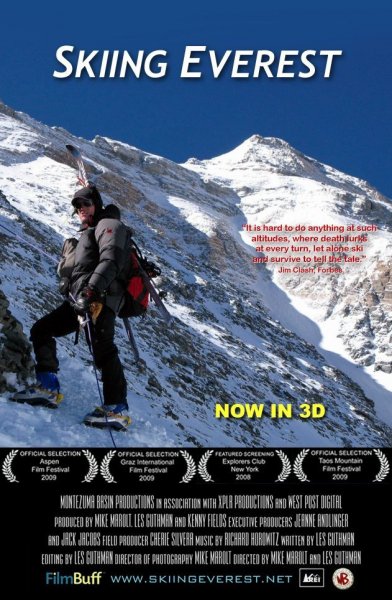
Si vous aimez ce film, faites-le savoir !
Skiing Everest is an American adventure documentary directed by Les Guthman and Mike Marolt; written by Les Guthman, and featuring high-altitude skiers Mike Marolt, Steve Marolt, John Callaghan, Jim Gile, Hans Kammerlander, Chris Davenport, Laura Bakos, Mark Newcomb. The film also features Fredrik Ericsson, who died skiing on K2 in 2010.
Filmed by Mike Marolt over ten years, Skiing Everest tells the story of a group of close friends, led by Marolt and his twin brother Steve, who grew up in Aspen, Colorado, and went on to become the first skiers from the Western Hemisphere to ski from above 8,000 meters (26,247 ft.) when they skied from the summit of Shisha Pangma in Tibet in 2000, and then challenged the highest slopes in the world on Mt. Everest and Cho Oyu.
The film follows the Marolts and their childhood friends Jim Gile, and John Callahan, who was an Olympic cross-country skier, on skiing expeditions into the Death zone above 26,000 ft., without using bottled oxygen. At the top of the world, they lock into their skis and challenge the most dangerous slopes in the world.
Skiing Everest also tells the history of high-altitude skiing, dating back to the 1930s, and includes interviews with Hans Kammerlander, who was the first to ski from the summit of Everest; Laura Bakos, the first woman to ski from the summit of an 8,000 m. peak; and Chris Davenport, the two-time world extreme skiing champion, who is an avid ski mountaineer as well. And it tells the Marolts' personal story: the sons of U.S. Olympic skier Max Marolt, who grew up in Aspen, before it became an internationally famous ski destination and who took to skiing in the hope of escaping what was an isolated, decaying former mining town.
Skiing Everest was shown in film festivals and theaters in 2009-2011 and was bought by ESPN in July 2011 for broadcast in the United States and Europe. It debuted on ESPN Classic in November 2011 with six primetime broadcasts over the weekend of November 18–20.
Skiing Everest was converted from 2D to 3D in 2012 by Blue Hemisphere 3D. It will premiere in December 2012 and be released in theaters and on 3D Blu-ray Disc in January 2013.
Commentaires
Postez un commentaire :
Suggestions de films similaires à Skiing Everest
Il y a 8965 ayant les mêmes genres cinématographiques, pour avoir au final 70 suggestions de films similaires.Si vous avez aimé Skiing Everest, vous aimerez sûrement les films similaires suivants :
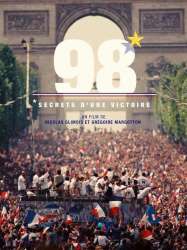
98, secrets d'une victoire (2018)
, 1h45Origine France
Genres Documentaire
Thèmes Sport, Documentaire sur le sport, Football
Note70%





Vingt ans après leur victoire à la Coupe du monde de football de 1998, l'ensemble des joueurs et membres du staff de l'équipe de France partagent leurs souvenirs de leur parcours durant cette compétition ; du premier match victorieux contre l'Afrique du Sud à la finale au scénario idéal contre le Brésil, en passant par le but en or contre le Paraguay, les tirs au but contre l'Italie et la demi-finale disputée contre la Croatie, ainsi que les à-côtés, comme la vie à Clairefontaine ou les changements dans l'opinion publique et les médias.
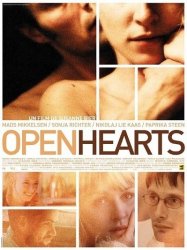
Open Hearts (2002)
, 1h53Réalisé par Susanne Bier
Origine Danemark
Genres Drame, Documentaire, Romance
Acteurs Mads Mikkelsen, Sonja Richter, Nikolaj Lie Kaas, Paprika Steen, Ulf Pilgaard, Ida Dwinger
Note74%





Cecilia et Joaquim, jeune couple d'amoureux, sont sur le point de se marier quand Joaquim est renversé par une voiture. Le diagnostic des médecins est sans appel : le jeune homme restera tétraplégique. Cecilia se prépare à affronter l'avenir avec son mari paralysé. Mais ce dernier sombre dans la dépression et préfère couper les ponts. De son côté, Marie, mariée depuis quinze ans et mère de trois enfants, est rongée par un sentiment de culpabilité : elle conduisait la voiture responsable de l’accident. Elle demande alors à Niels, son mari médecin, de se rapprocher de soutenir la fiancée de Joaquim pour la soutenir dans cette épreuve.

My Left Breast (2002)
Genres Documentaire
Thèmes Maladie, Sexualité, Homosexualité, Documentaire sur l'homosexualité, Documentaire sur la santé, Le cancer, LGBT, LGBT, Lesbianisme
Note68%





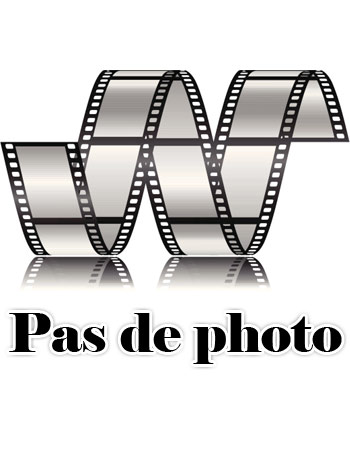
My Four Children (2002)
, 53minutesOrigine Israel
Genres Documentaire
Thèmes L'adoption, L'enfance, La famille, Documentaire sur une personnalité, Le handicap
 , 40minutes
, 40minutesRéalisé par Robert Houston
Origine Etats-Unis
Genres Documentaire
Thèmes Documentaire historique, Documentaire sur la politique, Politique
Acteurs Nick LaTour
Note78%





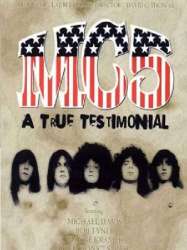
MC5: A True Testimonial (2002)
, 1h59Genres Documentaire, Musical
Thèmes La musique, Documentaire sur la musique, Documentaire sur une personnalité, Musique
Acteurs Wayne Kramer, Michael Davis
Note77%





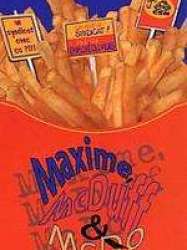
Maxime, McDuff & McDo (2002)
, 52minutesRéalisé par Magnus Isacsson
Origine Canada
Genres Documentaire
Thèmes Le monde du travail, Documentaire sur la politique, Documentaire sur les villes, Politique
 , 1h26
, 1h26Origine Etats-Unis
Genres Thriller, Comédie, Documentaire
Thèmes La musique, Documentaire sur la musique, Documentaire sur une personnalité, Musique
Acteurs George Lopez, Cheech Marin, Alex Reymundo, Paul Rodriguez
Note66%





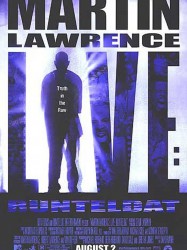 , 1h53
, 1h53Réalisé par Martin Lawrence, David Raynr
Origine Etats-Unis
Genres Comédie, Documentaire
Thèmes La musique, Documentaire sur la musique, Documentaire sur une personnalité, Musique
Acteurs Martin Lawrence, Nancy O'Dell, Mikki Padilla
Note54%





 , 55minutes
, 55minutesGenres Documentaire
Thèmes L'environnement, La mer, Transport, Documentaire sur le monde des affaires, Documentaire sur l'environnement
The area was originally considered worthless by European-Australian settlers, who fenced it off and abandoned it. The town was established around the start of the 20th century by German immigrant settlers. Its population increased after the first and second World Wars due to the government's policies of subsidies to encourage settlement by veterans. The people of Rainbow have struggled to eke out an existence for more than three generations, with global economics and government policy compounding the difficulties of marginal farming. The film draws from home movies from the 1940s to portray the people in this town.
 Connexion
Connexion